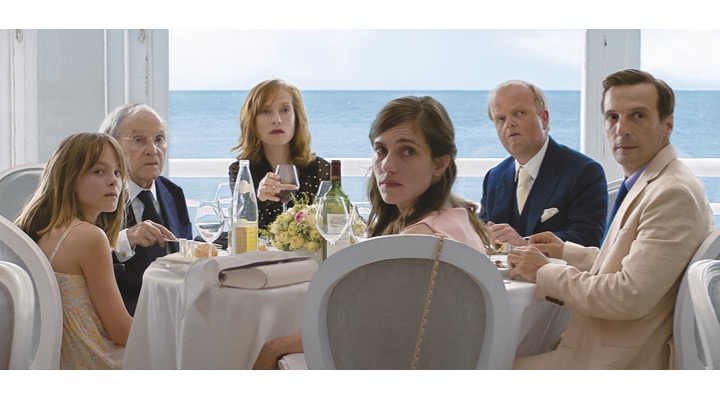“Happy End” – Money can’t buy happiness.
After watching writer/director Michael Haneke’s new movie, one could easily picture the aforementioned, famous saying as the film’s title, because the wealthy family featured – the Laurents – lumber in a constant state of dysfunction. Most Haneke fans – who appreciate this filmmaker’s frequent and wholehearted dives into cynical, offputting material – will embrace “Happy End” and leave the theatre satisfied, but not necessarily happy.
With Haneke, that’s generally the point.
Rather than driving home his points through a specific, sweeping story arc, Haneke captures a Laurent-slice of life over the course of 1 hour 47 minutes and repeatedly and successfully leaves the audience numb, horrified or occasionally caught in nervous laughter because of pure disbelief.
Filmed in the beautiful coastal location of Calais – the very northern point of France and a scant few miles from Great Britain across the English Channel – the Laurents should be enjoying a luxurious life as the principal owners of a construction company/real estate firm that, theoretically, should run itself. Although a snag of epic proportions suddenly arises on their latest building site, and actually, the problem is the polar opposite of the word: rise. The matriarch, Anne (Isabelle Huppert) – the most grounded in the family – attempts to smooth out this rocky occurrence.
As the story unfolds – however – this physically enormous business-setback pales in comparison to the troubles within the clan, their associated, individual character flaws and poor judgment. Anne, Anne’s father George (Jean-Louis Trintignant), her son Pierre (Franz Rogowski), her brother Thomas (Mathieu Kassovitz), his daughter Eve (Fantine Harduin), and his wife Anais (Laura Verlinden) spend a vast majority of time existing in broken and isolated relationships, and also within the Laurent home, a local hospital and a few other indoor locales. The camera does occasionally nuzzle with the gorgeous Calais scenery, including a warm, sunny beach sequence – but many times the audience is placed inside, accompanied by cold, unhealthy on-screen behavior, with an occasional open window revealing blue skies and green trees, but those comforting locks of nature seem far, far away.
Anne is a steady source of comfort and manages the toxic behavior when it becomes visible to her, as evidenced by her concern for Pierre, who lacks focus and direction, except when trying to sabotage the family during public gatherings. Anne worries about his destructive tendencies, but, unfortunately, she does not know how to emotionally reach him. Pierre isolates, like the individual Laurents frequently do. Much of the family’s detrimental behavior goes unnoticed by Anne, but not by the audience via Haneke’s reveals, sometimes voyeuristically and other times in plain sight.
Like the windows revealing soothing weather so far away, Haneke masterfully frames his subjects or settings by simply placing his camera in one spot for lengthy periods, while letting the eventual movement or narration dictate anxiety. This effective practice harkens back to memories of “Cache” (2005), but Haneke is not – by design – as singularly-focused here as in that film.
Actually, he does uncover a truly startling connection to one of his previous movies in a moment of conversational enlightenment that does help rationalize one character’s specific behavior. Appropriate rationales are certainly not the norm, including another Laurent’s monstrous tendencies, and of course, the film links them with an audience’s fears during the picture’s most vulnerable moments.
Money may not buy happiness, but – as “Happy End” illustrates – mass quantities of wealth do not address humanity’s vulnerabilities either. With satire, sorrow and secrecy bathing in dark corners and also in broad daylight, don’t worry, be happy never felt so difficult.
⭐⭐⭐ out of ⭐⭐⭐⭐
Image credits: Sony Pictures Classics; Trailer credits: SonyPicturesClassics




